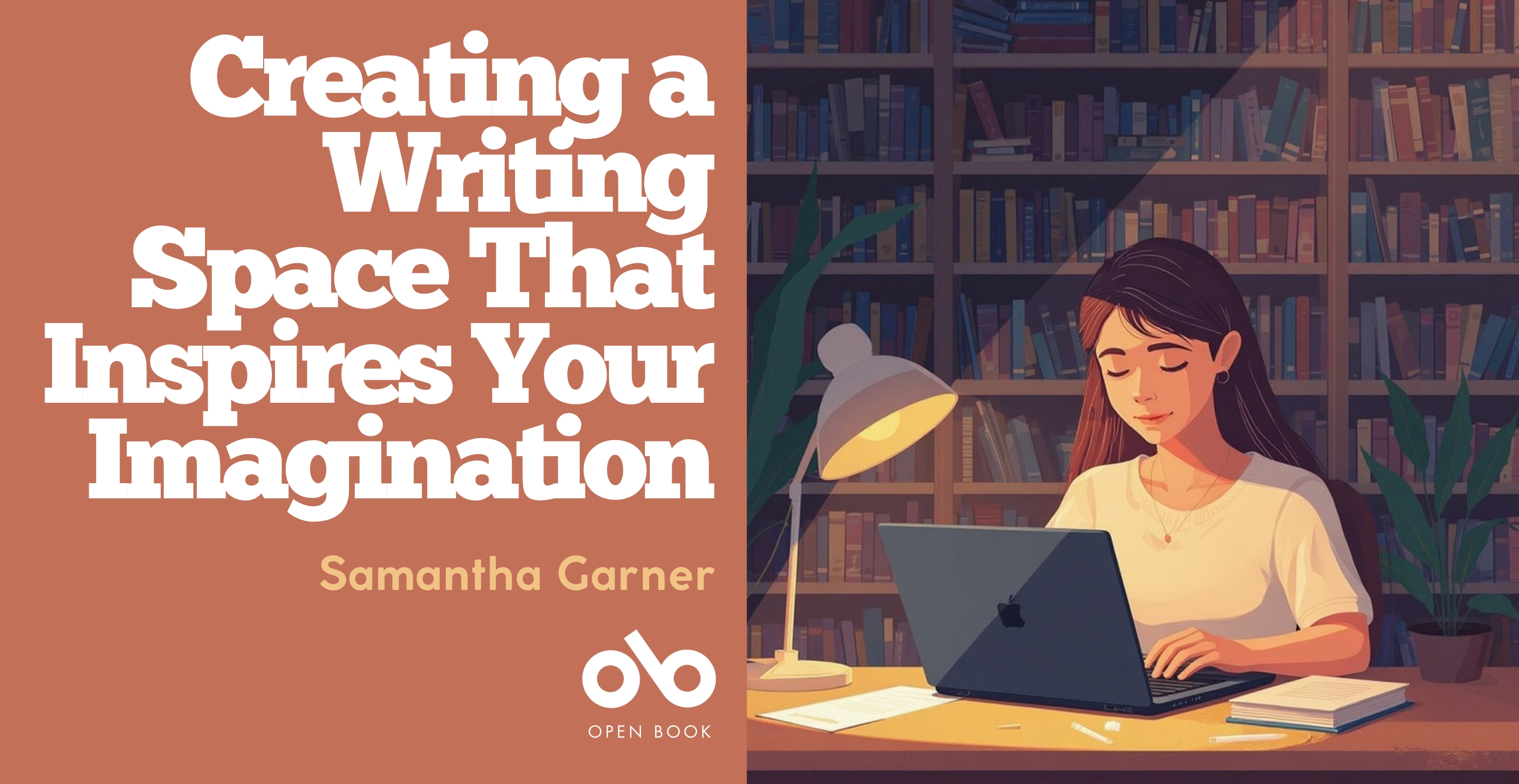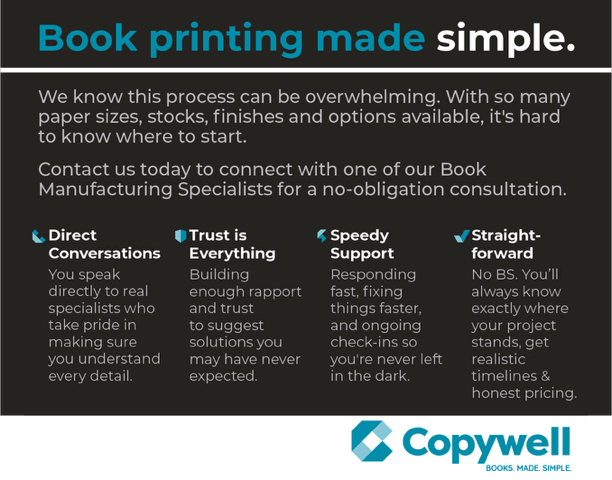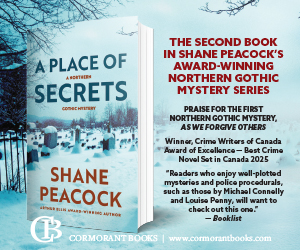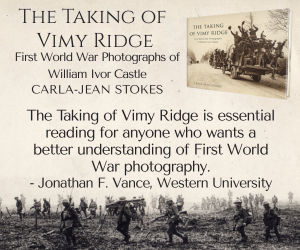Creating a Writing Space That Inspires Your Imagination
By Samantha Garner
I’m not one for a set writing routine, but finding other ways to be consistent has helped me feel more connected to my practice and my creativity. My writing space is key to this. It’s not the biggest or even the most private space, but it feels grounding when I need it.
Do you really need a fixed writing space?
In short: no, you don’t need a fixed writing space like a desk. All you really need is a place to set up your laptop or notebook, one that’s comfortable and conducive to good work. For me, setting aside a space for writing honours the act of creativity. I write at a small desk in a corner of my living room – there’s no door to the room, no bookshelves nearby. But it serves to ground me in my work. It signals to my brain that I’m going to cross the threshold from daily life to imaginative life.
You can absolutely achieve this same effect without a dedicated desk area. You can think of a less-fixed writing space as something personal and sustaining with the objects you bring to it. For example: sitting at your kitchen table with a notebook and a cup of tea, or in a coffeeshop while listening to a dedicated writing playlist. Little rituals are also a great way to create a space for writing to happen. Some of my favourites are pulling a tarot card at the beginning of a writing session and lighting a candle.
Your CanLit News
Subscribe to Open Book’s newsletter to get local book events, literary content, writing tips, and more in your inbox
Four dimensions of a writing space
To help create an inspiring writing space – temporary or permanent – think of ways you can bring in one or more of these four dimensions:
- Functional: Think beyond the quotidian tools of your writing life and try to make them a little more special. Maybe you buy a fancy pen you only use when drafting, or maybe you only drink a certain kind of tea while you work.
- Sensory: What smells, textures, or sounds can support you in your writing day or ground you in your work? One key component of my writing space is the music I listen to – usually no lyrics, just atmosphere. My go-to playlist consists of some John Carpenter songs and the Tron: Legacy soundtrack. (Weird bonus: this playlist also acts as a stopwatch of sorts. It becomes a unit of time for me, and I often decide I’ll write for “one playlist” and then stop.)
- Symbolic: Some writers find value in creating moodboards near their writing space, or gathering objects around them that remind them why they write. I used to have a bulletin board where I pinned an old picture of Doris Lessing with a particularly evaluating expression on her face. It felt like she was a breath away from shaking her finger at me and telling me to get moving – motivation when I wanted it.
- Temporal: I touched on little rituals earlier, and I really do like them better for myself than a rigid schedule. Marking time before and after my work seems to make a little container for it in my mind. Before writing I usually make tea and light a candle, sometimes pull a tarot card. When I’m at a good place to stop, I blow out the candle and put away any detritus my writing session caused. There are other non-ritualized ways you can mark time, but for me the physical actions symbolically honour the session.
The most important thing to remember: your writing space doesn’t have to be perfect. It can and should adapt with whatever you have going on in your life and brain. It just needs to be an intentional space that shows you what you do matters. Think of ways you can represent the invisible act of creativity with something visible. Maybe writing down one idea from each of the four categories above can get you started. Whatever your writing space looks like, it’s uniquely yours – have fun with it!
The views expressed by Open Book columnists are those held by the authors and do not necessarily reflect the views of Open Book.
Samantha Garner is the author of The Quiet is Loud, shortlisted for the 2022 Kobo Emerging Writer Prize. A Canadian of mixed Filipino-Finnish background, her character-driven fantasy novels explore themes of identity and belonging. When not writing, Samantha can be found daydreaming in a video game or boring a loved one with the latest historical fact she’s learned.
She can be found online at samanthagarner.ca and on Instagram and Twitter at @samanthakgarner.




